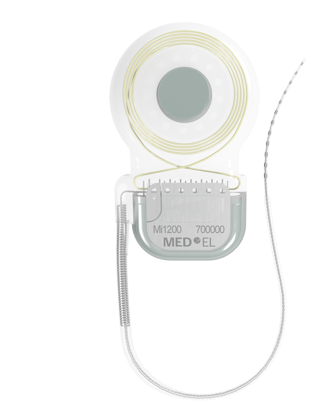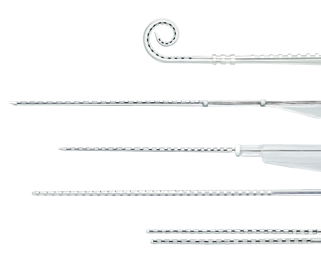
The internal component, the implant, is consisted of a coil - receptor, the microcomputer and a thinnest cable that bears an array of electrodes (from 12 to 22, depending on the implant).
The implant does not contain battery and the essential energy that needs in order to function, is transported by the exterior speech processor along with the information (data).
All implants are manufactured from histocompatible materials (silicone, ceramic, titanium).




The coil conceives the information and transports them in the microcomputer so that are decodified and distributed in the individual electrodes.
These are placed in the tympani scale of the cochlea, distributed in the nervous endings of the cochlear nerve, so that each electrode stimulates the corresponding nervous fibres of the acoustic nerve in the spiral ganglion and simulate electronically the operation of the cochlea.
The course of acoustic information from this point and afterwards follows the normal path up to the centre of hearing in the cortex of the brain, where the sense of hearing is evoked.











